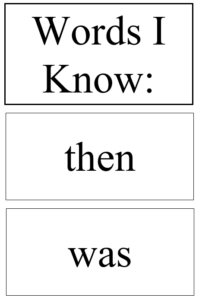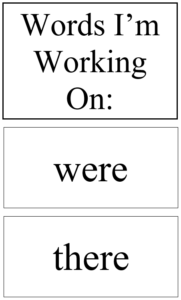Data-Based Individualization Case Study Part Five
![]()
Mr. Williams has conducted the diagnostic assessments and created a plan for adapting Joe’s instruction. The next step in the DBI process is to create a progress monitoring plan for the instructional adaptations.
Let’s see how Mr. Williams develops his progress monitoring plan.

(Source: National Institute for Intensive Intervention)
The last step before Mr. Williams implements the DBI process for Joe is to create a progress monitoring plan for track Joe’s progress. Mr. Williams has decided to continue to use the oral reading fluency probes to track Joe’s accuracy and fluency with reading. He creates an additional data sheet to track Joe’s sight word accuracy and what words he consistently misses. Lastly, he decided to use the word identification fluency (WIF) probes from progress monitoring tools for 2nd grade for both long vowels and multi-syllabic words. He decides to use WIF to track Joe’s accuracy and fluency with long vowel and multi-syllabic words.
This is an example of a WIF that Mr. Williams will use for Joe:

Mr. Williams has prepared the materials to begin the DBI process with Joe. During his Tier II intervention lesson, he provides immediate and corrective feedback when students make an error. He also provides positive and specific academic feedback during the lesson. Joe continues after the 30 minutes intervention lesson and begins working on the instructional adaptations Mr. Williams has made.
Mr. Williams presents Joe with his goal setting and data tracking sheet and he and Joe set his goals for the week. For their sight words practice, Mr. Williams works with Joe using sight word flashcards. As he presents Joe a card, Mr. Williams puts the cards in two piles: words Joe knows and words to work on.


At the end of the review, Joe tracks his accuracy with the sight words and tracks the words he needs to work on. Next, Mr. Williams presents Joe with a word card with “dot” written on it. He has Joe segment the word and then say the word “dot.”

After Joe segments the word, Mr. Williams adds the letter tile -e on the end. He demonstrates to Joe how to segment the word with the addition of -e.

After segmenting he asks Joe to segment the word. Joe does but continues to say dot. Mr. Williams provides corrective feedback and models again for Joe how to segment “dote.” Joe tries again and segments the word correctly. Mr. Williams and Joe continue this through the instructional time. They repeat the same activity for the multi-syllabic words.
At the end of the week, Mr. Williams takes his progress monitoring data. Since he will be using the oral fluency probes, he decides that he will need additional data points to determine if the instructional adaptations he has made an impact on Joe’s fluency.
Now that Mr. Williams has created his progress monitoring plan and begun the instructional changes, let’s visit Case Study Conclusion to see how Mr. Williams implements the progress monitoring plan.
Click on the image below to see Case Conclusion.
References:
DBI Process Overview. (n.d.). Retrieved October 27, 2019, from https://intensiveintervention.org/resource/dbi-process-overview.
IRIS: Word Identification Fluency. (n.d.). Retrieved October 27, 2019, from https://iris.peabody.vanderbilt.edu/module/rpm/cresource/q1/p02/word-identification-fluency/.

